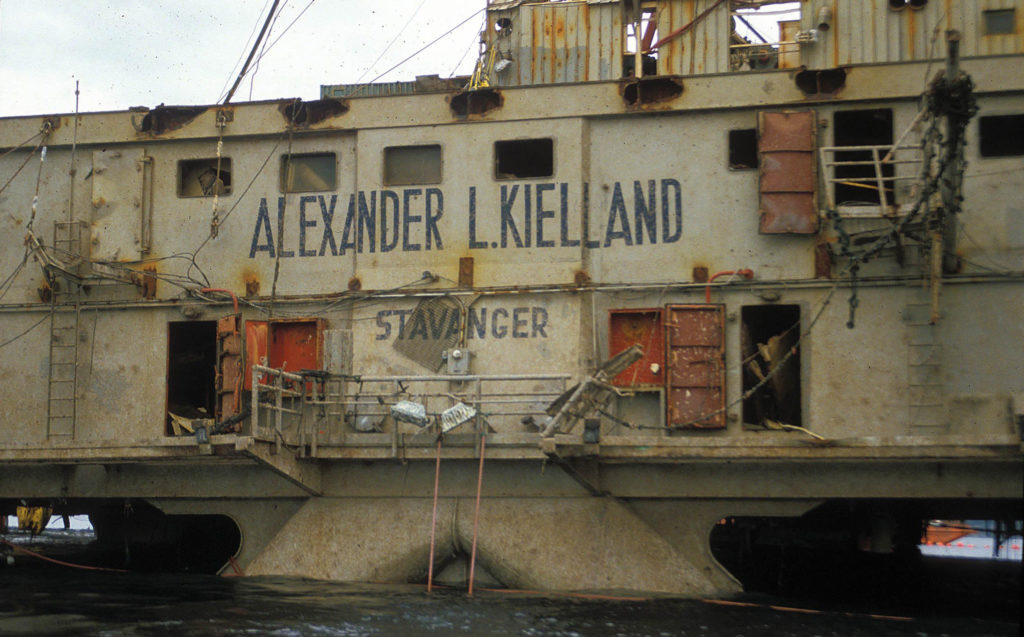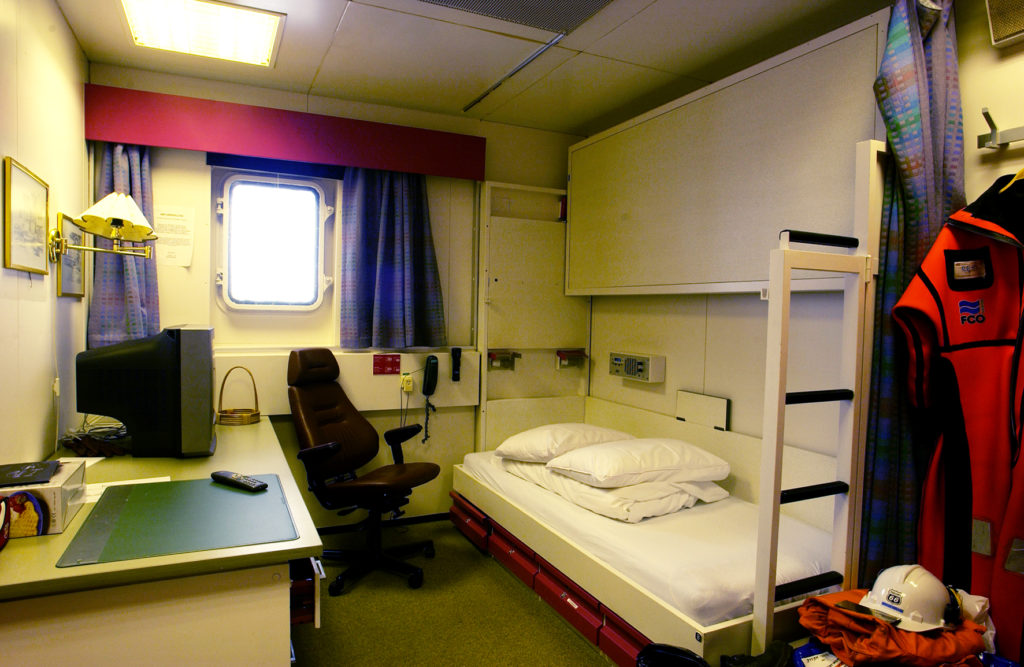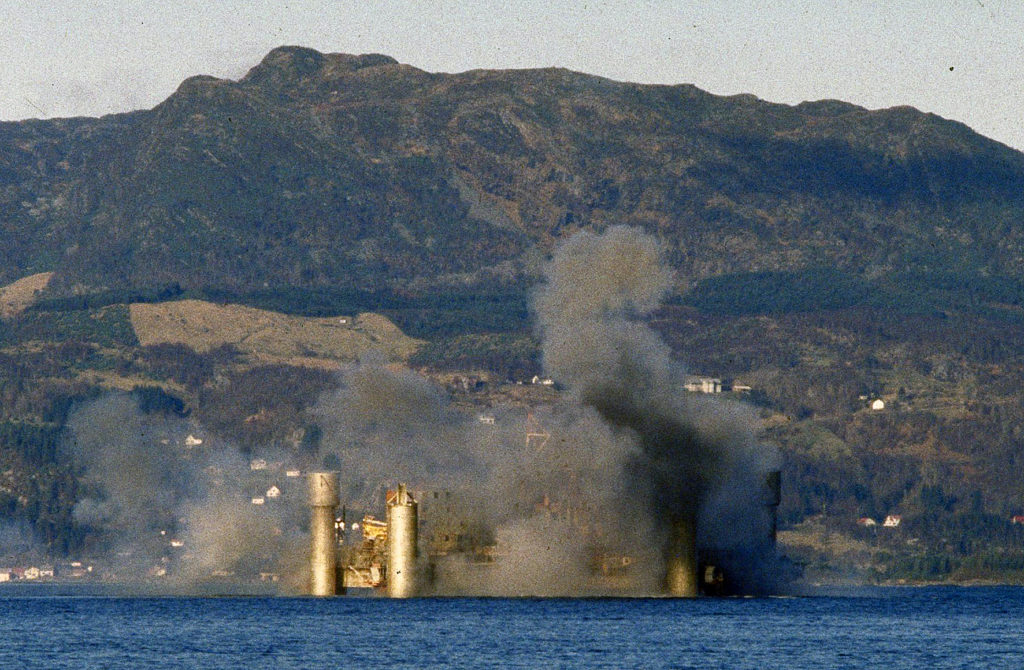What caused the Alexander L. Kielland-accident?

In Norwegian Official Reports (NOU) no 11 1981, the commission concluded that the accident was caused by a fatigue crack in one of the braces which held the flotel’s support columns together. This fracture occurred in a small weld holding a flange plate which supported a hydrophone – a sonar device used during drilling operations. Once the brace had parted, progressive failure of the other bracing led to the loss of the D support column. That left the flotel unbalanced and it began listing. In turn, that meant the pontoons at the base of the columns and the deck began to take on water, and the whole structure turned turtle within 20 minutes.
The commission found a number of faults, including poor inspection routines and safety training. A standby ship should have been no more than 20-25 minutes from the flotel. Technical weaknesses in rescue equipment were also criticised.

New safety measures
Immediately after the accident, the Norwegian Maritime Directorate demanded that all floating units off Norway should be taken to land as soon as possible and checked for cracks.
Regulations were introduced which required that such floaters must remain buoyant even it one of its support columns came off – by making parts of the deck structure buoyant, for example.
In the autumn of 1980, the directorate required that all personnel on both fixed and floating units be issued with survival suits. That is perhaps the most visible outcome of the accident.

Inquiry and righting
- 28 March 1980 – the government appoints a commission of inquiry into the Alexander L Kielland accident headed by district judge Thor Næsheim from Sandnes south of Stavanger.
- 20 April 1980 – the flotel wreck is towed in from the field and moored in the Åmøy Fjord just north of Stavanger for more detailed investigation.
- 7 August 1980 – Sweden’s Nicoverken and Structural Dynamics in the UK are commissioned to turn the unit right side up.
- Late August 1980 – the wreck is towed to the Gands Fjord off Stavanger, where plans call for the righting operation to take place.
- 27 October 1980 – the righting attempt is launched under the direction of Scott Cobus.
- 12 November 1980 – work has to be halted for technical reasons.
- September 1983 – After several attempts, the flotel was finally righted . Following more detailed investigations, it was finally scuttled in 700 metres of water in the Nedstrand Fjord north of Stavanger.

Alexander L. Kielland
